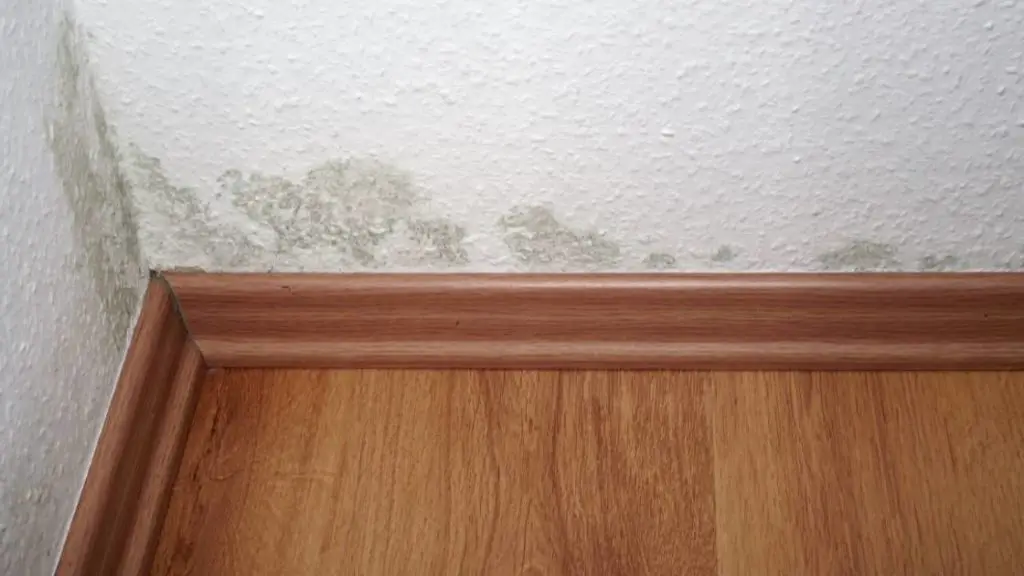If you are a tenant who has mold in your dwelling or a landlord who has been alerted that there is mold in one of your units, you may be asking what is required in terms of relocation while the mold is being addressed.
Unfortunately, there is no federal guidance that governs mold remediation in the landlord-tenant context, so you will need to look at your state and local laws. Even there, the issue of relocation due to mold is often not addressed.
There are some states that tackle this issue (three of which we cover below), but if you want a definitive answer for your specific situation, you will need to check your state and local landlord-tenant laws (or even better, consult a qualified attorney) to get a complete understanding of the requirements.
[Note: if you want great and truly affordable legal help, check out Just Answer. You can get started for only $5. Their offer is at the end of the article]
The Short Answer
Ok, I provided the context, but here’s the short answer to the question.
As a general rule, tenants need to be relocated if the mold is serious enough to cause the dwelling to be uninhabitable. If this is the case, landlords are usually required to remediate mold at their expense (unless it’s caused by the tenant). But the question of who covers the costs of relocation will depend on the lease terms and state and local laws.
In this article, we will discuss in more detail the circumstances in which tenant relocation is necessary (including some of the key factors involved) and some alternatives that may be available to both tenants and landlords if relocation is not desired or feasible.
The information contained in this post is for informational purposes only. It is not legal advice. You should seek the advice of a qualified legal professional before making any decisions relating to the topics covered by this article.
We may earn commissions from products and services that are purchased or recommended through our website as part of our affiliate partnerships. As an Amazon affiliate, we may earn from qualifying purchases.
What is Mold?

Mold is a type of fungi that can grow in damp locations.
As you can imagine, mold comes in many shapes and forms. Mold needs two things to grow: (i) moisture and (ii) food (which can be any organic matter, such as leaves, wood, paper, or even dust). In a residence, organic matter is almost always available, so whether mold grows depends mostly on whether there is moisture.
Bottom line: If you fix the moisture, you can prevent mold from growing in your home.
Why Should I Care About Mold?
The presence of mold in a building has been clearly linked to increased risk of various respiratory health effects, so it is important to remedy a mold situation as soon as possible. Source
If you detect the presence of mold (or any other significant accumulation of moisture), either through smell or sight, you should notify your landlord in writing as soon as possible.
When is Tenant Relocation Required Due to Mold?
Because of its potentially harmful health effects, some states and local governments have adopted rigorous requirements around remediating mold. In some cases, there are also relocation requirements that may apply while the remediation work is being done.
I would note that before you try to analyze your state and local laws, you should look at your lease to see if it addresses mold remediation. The lease may clearly spell out who is responsible when it comes to fixing mold, and it may also address relocation in the event of a mold infestation.
Note: If the lease has a provision that conflicts with applicable law, it may not be enforceable, so you also need to check your state and local landlord tenant laws.
As mentioned earlier, each state has its own rules regarding mold (with some being silent on the issue altogether), but I have selected three that deal squarely with the issue. Let’s get into it.
New York Law
New York recognizes the implied warranty of habitability. This means that all leases contain a promise (whether expressly laid out or not) that the premises will be fit for human occupation.
If a dwelling is not habitable, then courts may find that the tenant has been constructively evicted and may relocate to another dwelling, with the landlord paying the costs for the move. Under a constructive eviction, any rent that would have been paid while the tenant was unable to live in the dwelling would be abated (a fancy term for forgiven).
As reported by the New York Times, this was exactly what happened to a couple that noticed a leak in their NYC apartment that ultimately resulted in black mold forming in their home. They left the apartment, subleased an apartment elsewhere, filed a legal action against the landlord and stopped paying rent.
The judge granted tenants a $31,040 rent abatement.
Manhattan attorney, Sam Himmelstein, also shares the view that if you are constructively evicted due to mold, then you should be relieved from paying rent while the premises is uninhabitable and you may be entitled to moving expenses. Source.
California Law

Let’s turn now to California. Like New York, California also recognizes the implied warranty of habitability.
According to the California Housing Code, the presence of visible mold growth, as determined by a health officer or a code enforcement officer can make a dwelling “substandard” if it’s a danger to the health of occupants. Of course, there is an exclusion for mold that is minor and found on surfaces that can accumulate moisture as part of their properly functioning and intended use.
If the dwelling is deemed “substandard” due to mold, the owner must remediate it.
If the landlord fails to do so in a timely manner, the tenant may terminate their lease and relocate to another property.
If you are a landlord in California, you may want to be prepared to pay for relocation expenses if the mold situation is really bad. Now, there does not appear to be a specific requirement to relocate tenants due to mold, but you may still want (or need) to do so if the conditions are egregious.
For example, in Santa Rosa, California, a building had such a severe mold (and rat) problem that the city ordered several sick tenants to vacate their homes. Although the landlord gave the tenants $2,000 for relocation, the tenants are suing the landlord for damages, according to a press report. Source.
If you happen to live in Los Angeles County, the rules are even more clear (and tenant friendly). If a tenant is “temporarily displaced” then the landlord must cover relocation expenses (and it even lays out the amounts based on dwelling size). Source.
A tenant is temporarily displaced if they must temporarily leave their unit for one of the following reasons, until the issue is resolved:
- Necessary repairs
- Rehabilitation (Major upgrades/repairs that increase value to the property)
- Health and safety violations or
- Work that cannot be completed while the tenant remains in the unit.
Mold issues could be covered under both the third and fourth bullet points.
Obviously, if the mold issue is serious enough, it could constitute a “health and safety violation.” And if the remediation is extensive, that work may not be able to be completed while the tenant remains in the unit.
Virginia Law
Let’s switch to another jurisdiction. Virginia’s laws include mold requirements that impose duties on both landlords and tenants.
Landlords have a general obligation to maintain the premises so as to prevent the accumulation of moisture and the growth of mold, and promptly respond to any notices from a tenant relating to mold issues. And if they find visible evidence of mold, they must promptly fix it. Code of Virginia § 55.1-1220.
But tenants have obligations too.
Tenants must use reasonable efforts to maintain the dwelling in such a condition as to prevent the accumulation of moisture and the growth of mold. They must also promptly notify the landlord of moisture accumulation that occurs or any visible evidence of mold that they discover. Code of Virginia § 55.1-1227.
If mold is seriously affecting the health or safety of a tenant, the landlord may require the tenant to temporarily vacate the property in order for the landlord to perform remediation. In this case, the landlord, at their expense, must provide the tenant with either (i) a comparable dwelling or (ii) a hotel room.
But this type of relocation does not excuse the tenant from paying the rent and does not allow the tenant to terminate the lease if the landlord has remediated the mold properly.
It’s also worth noting that the landlord does not need to pay for relocation and the mold remediation if the mold was caused by tenant’s failure to maintain the premises in a way that prevents mold growth (see citation above).
What Are Alternatives If Temporary Relocation is Not Desired or Feasible?
If the law (and your lease) is silent on relocations due to mold, you have a number of options you can pursue.
Self Help

If you are a tenant and don’t want to relocate or if your landlord is not fixing the mold issue in a timely way, you may want to remediate the mold issues on your own.
You basically have two options. You can remove the mold yourself or you can hire a qualified mold remediation company.
As a general rule, mold that is less than 10 square feet in size can be done by yourself. The key is to solve the root cause of the moisture that is spawning the mold.
Here are some key steps you can take to remove mold by yourself.
- Fix any leaks or other causes of excessive moisture as soon as possible and dry the area completely.
- Diligently scrub any mold off of anything in the area (you can use any of the mold removal products out there like Tilex, etc.) and make sure it is fully dry after you are done. Ensure that the product contains both a fungicide (which kills the fungus) and a mildewstat (which helps prevent the regrowth of mold and spores)
- You may have to get rid of ceiling tiles or carpet where the mold has absorbed into its surface.
- Make sure to wear clothes that can be thrown away after the cleaning.
- Don’t paint over it because it will later peel and expose the air to mold again.
If the mold situation is beyond your ability to fix, then you will need to hire a professional mold remediation company. Bear in mind that professional mold remediation can be quite costly, depending on the scope and seriousness of the mold infestation.
If you have to spend money on remediating the mold, you may want to see if your state laws allow you to use the ‘”repair and deduct” method. If this option is available, you can deduct the costs that you incur from your next rent payment.
If not, you always have the option of pursuing a lawsuit against your landlord for the costs associated with remediating the mold. If you do this, you want to make sure you did everything right on your end (e.g., the mold is not due to your actions or inactions, you provided notice of the issue to your landlord, they failed to fix it in a timely way, etc.).
Whether you choose to file an action or not, you will want to keep meticulous records of all communications with your landlord, as well as any evidence of the mold infestation (including photos, etc.).
Check to See if Early Termination of the Lease is an Option
If you are a tenant who would like to move out due to mold, then you may be able to do so if the mold situation is serious enough to terminate the lease under the law.
Again, the key is generally whether the mold is serious enough to cause a habitability issue. You should check your state and local landlord-tenant laws to figure what remedies are possible (or even better, you may want to consult with a qualified attorney).
Related Reading: For a more detailed discussion of when you can terminate your lease early due to mold, check out my full article on the topic here.
As a final resort, you may want to leave the unit and risk being on the hook for the remainder of the rental payments under the lease. In most jurisdictions, the landlord is required to mitigate damages by trying to find a suitable replacement tenant. Once they do, you will no longer be on the hook for your lease.
Bear in mind that, although they may be obligated to try to find a replacement tenant, they may not be able to do so quickly (or at all) if the rental market is soft. That means you will be on the hook for any remaining rental payments under the lease until they can do so. That could be a lot of money if you have a long time left on your lease.
Another risk of breaking your lease like this is that a landlord may report any non-payment of rent to credit reporting agencies and take you to court. These actions can have a serious and negative impact on your credit score, which could affect your ability to rent a new place in the future.
It’s a gamble, so you should only use this as a last resort, but it might be better than living in a home that is dangerously unsafe (especially if the landlord is not willing to fix the mold issue and you can’t afford to do it yourself).
Conclusion
Relocation during a mold situation can be a trying experience, but the good news is that there are options that you can explore, whether you are a landlord or a tenant.
As a recap, make sure you check your lease to determine what your rights and obligations are there, but remember to also look at your your state and local laws to see how they have addressed this issue. In many cases, even if mold remediation is not specifically addressed, you may be able to file a claim under the implied warranty of habitability.
This is probably obvious by now, but this stuff is complicated and it will be tough to figure it out on your own.
If you prefer to have a lawyer assist you, I would try JustAnswer. They boast access to thousands of highly-rated, verified real estate lawyers whom you can connect with via their unlimited chat service.
By clicking the banner below, you can get a one week trial membership for only $5, which you can cancel at any time.



